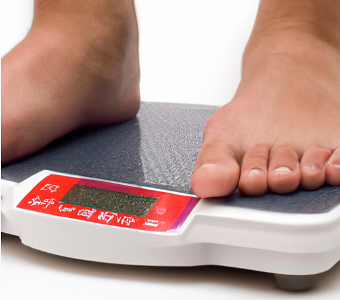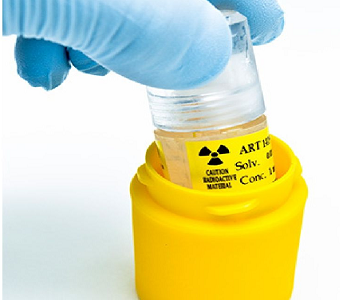Update after the bell, BioLife announces a 1:14 reverse split.
Talk about timing. BioLife Solutions (BLFS) (which Mr. Deryugin wrote about this morning below and in advance to PropThink Premium subscribers) announced after the close on Tuesday that it will be conducting its previously approved reverse split at 1-for-14. The company anticipates that the reverse split will be effective at the market open on January 29, 2014, and as Mr. Deryugin outlined, is intended to facilitate an uplisting to the NASDAQ.
The reverse will reduce the number of shares of common stock outstanding from approximately 70 million to approximately 5 million (6.9 million on a fully diluted basis). It won’t take much supply-demand imbalance to move BLFS rapidly, particularly in tandem with an uplisting in the coming months. Below you can read why Mr. Deryugin likes this name in 2014.
PropThink has made the case for some time that BioLife Solutions’ (BLFS) increasingly lucrative niche in biopreservation, coupled with a lack of analyst coverage (only Zacks covers the company) has created an asymmetric opportunity for long-term investors. Since our April 11 report, BLFS is up over 76%, outpacing the NASDAQ Biotechnology Index’s 42% rise over the same time period. But BLFS has reversed sharply, falling from a high of $1.71 late last year to close at $0.60 on January 16, 2014. Nevertheless, we believe that developments around the company’s corporate governance and capital structure are noteworthy and will attract investors who’ve long seen the company’s precarious capital structure and balance sheet as a concern. We have always seen BioLife as a long-term investment, not a trading vehicle, and believe that developments in the last few months have positioned the company for meaningful upside.
Q3 2013 Results: Conservatism Does Not Mean Weakness
BioLife released key Q3 results on November 14, 2013. On the surface, the company saw a deceleration in several key metrics. Consolidated revenue declined sequentially, breaking a 12-quarter streak of consecutive revenue records. Furthermore, the company saw a sequential decline in operating leverage and operating cash flow, both key concerns for BioLife. We present BioLife’s consolidated results in the table below.
BioLife Solutions Q3 2013
|
|
Q3 2013 |
Q2 2013 |
Q3 2012 |
Sequential Change |
Y/Y Change |
Q1-Q3 2013 |
Q1-Q3 2012 |
Y/Y Change |
|
|
Product Sales |
$1,002,086 |
$941,568 |
$620,627 |
6.43% |
61.46% |
$2,713,787 |
$2,202,634 |
23.21% |
|
|
Contract Manufacturing Services |
$1,168,405 |
$1,388,450 |
$1,055,853 |
-15.85% |
10.66% |
$3,337,567 |
$1,397,136 |
138.89% |
|
|
Licensing Revenue |
$0 |
$0 |
$5,000 |
0.00% |
-100.00% |
$609,167 |
$15,000 |
3961.11% |
|
|
Total Revenue |
$2,170,491 |
$2,330,018 |
$1,681,480 |
-6.85% |
29.08% |
$6,660,521 |
$3,614,770 |
84.26% |
|
|
Cost of Sales |
($1,281,634) |
($1,501,575) |
($1,086,031) |
-14.65% |
18.01% |
($3,817,737) |
($2,073,909) |
84.08% |
|
|
Gross Profit |
$888,857 |
$828,443 |
$595,449 |
7.29% |
49.28% |
$2,842,784 |
$1,540,861 |
84.49% |
|
|
Gross Profit ex-Licensing |
$888,857 |
$828,443 |
$590,449 |
7.29% |
50.54% |
$2,233,617 |
$1,525,861 |
46.38% |
|
|
Gross Margin |
40.95% |
35.56% |
35.41% |
+539 bps |
+554 bps |
42.68% |
42.63% |
+5 bps |
|
|
Gross Margin ex-Licensing |
40.95% |
35.56% |
35.22% |
+539 bps |
+573 bps |
36.91% |
42.39% |
-548 bps |
|
|
Research & Development |
$160,528 |
$94,908 |
$110,689 |
69.14% |
45.03% |
$361,404 |
$353,837 |
2.14% |
|
|
Sales & Marketing |
$208,080 |
$214,762 |
$145,735 |
-3.11% |
42.78% |
$625,600 |
$379,774 |
64.73% |
|
|
General & Administrative |
$630,342 |
$601,617 |
$487,733 |
4.77% |
29.24% |
$1,856,386 |
$1,441,852 |
28.75% |
|
|
Total Operating Expenses |
$998,950 |
$911,287 |
$744,157 |
9.62% |
34.24% |
$2,843,390 |
$2,175,463 |
30.70% |
|
|
Operating Loss |
($110,093) |
($82,844) |
($148,708) |
-32.89% |
-25.97% |
($606) |
($634,602) |
-99.90% |
|
|
Operating Loss ex-Licensing |
($110,093) |
($82,844) |
($153,708) |
-32.89% |
-28.38% |
($609,773) |
($649,602) |
-6.13% |
|
|
Operating Loss as a % of Revenue |
-5.07% |
-3.56% |
-8.84% |
-151 bps |
+377 bps |
-0.01% |
-17.56% |
+1,755 bps |
|
|
Operating Loss as a % of Revenue (ex-Licensing) |
-5.07% |
-3.56% |
-9.17% |
-151 bps |
+410 bps |
-10.08% |
-18.05% |
+797 bps |
For the first time in 12 quarters, BioLife did not set a new revenue record in the third quarter, as contract revenues declined by almost 16% relative to Q2 2013, helping push consolidated revenues down by almost 7% sequentially. However, the increase in core product revenue, which carries structurally higher gross margins, helped expand gross profit by over 7% sequentially. For some time, BioLife’s torrid revenue growth has come at the cost of gross margins; for the first three quarters of 2013, the company posted pro forma gross margins of 36.91% (adjusted for licensing revenue), over five percentage points lower than in the same period of 2012. Now, the tide is shifting in the other direction.
Year-over-year, BioLife grew total revenues by just over 10%, well below the 80%+ growth rate the company booked for the first three quarters of the year. The shift back to product revenue has allowed BioLife to accelerate its gross profit growth, and re-invest the proceeds back into its business. Indeed, the company’s year-over-year expense growth during Q3 2013 was driven by surging research & development spending, which rose over 45%, a marked change from the company’s pace earlier in the year. However, while BioLife’s pro forma operating losses as a percentage of revenue rose sequentially, they continued their year-over-year decline, falling to just over 5%, down over 400 basis points year-over-year; for the firs three quarters of 2013 they have fallen almost 800 basis points to just over 10%, and we expect further improvements over the course of 2014, albeit with the potential for sequential volatility.
On the operational front, BioLife secured two new contracts in recent months. In September, prior to the close of the quarter, BioLife inked a new distribution agreement with SAVSU Technologies (privately held). SAVSU specializes in temperature stability products, both at “conventional” hypothermic storage temperatures and deep freeze temperatures. In addition, SAVSU also offers long-term hypothermic storage solutions designed for either international shipments or storage in remote areas. Under the terms of the agreement, BioLife will market and distribute SAVSU’s storage offerings to its growing customer base in the regenerative medicine market. We expect the impact of this deal to begin materializing in Q4 2013, with a more material impact occurring in 2014. And in December, the company announced that Discgenics (privately held) has selected its CryoStor cryopreservation media for use in the development of its injectable discogenic cell therapy for low back pain, thereby adding Discogenics to its slate of clinical customers, which continue to represent a long-term source of upside potential for BioLife’s revenue base.
Despite continued year-over-year growth. BioLife once again declined to raise its full-year guidance for 2013, even though revenue for the first three quarters of the year has almost approached the high end of its full-year guidance ($7 million). And yet, the company did not raise guidance, likely unnerving some investors. We, however, see the issue differently. Given its status as an OTC company, and one that trades below $1, BioLife is sensitive to accusations that it is driving its share price higher via sensationalist press releases and inflated expectations. On balance, we believe that it is preferential for BioLife to be overly conservative rather than overly optimistic, and as we’ve noted in prior coverage, the company has a track record of issuing conservative guidance. This proved out on January 6 when BioLife issued preliminary results for Q4 2013. While the company did not disclose its full financials (the 10-K will be filed by February 15), BioLife reported that its preliminary revenue for 2013 as a whole came in at $9 million, representing an increase of 58% versus 2013, and a new quarterly revenue record of $2,339,479, marking a return to sequential growth and representing year-over-year growth of 14.22%. In any case, the fact that BioLife’s insiders own well over a third of the company mitigates this; in our view, the company has refrained from being overly optimistic to inflate its share price even though its insiders would realize the most benefit from such a strategy. Even with a continued conservative stance, we expect new investors to come around to this story, as several recent changes to BioLife’s corporate governance and capital structure have positioned the company for further long-term upside.
Reshaping BioLife
As we have noted before, BioLife has made clear that up-listing to the NASDAQ is a top priority, and on December 16 the company made good on its promise, applying to list on the NASDAQ Capital Market. In conjunction with its application, the company undertook a series of moves designed to reshape its balance sheet and the market for its stock. BioLife’s board of directors has approved a reverse split to meet NASDAQ listing requirements, with a ratio between 1 for 4 and 1 for 16 depending on the then-current share price.
More importantly, BioLife has also addressed its debt. The company’s balance sheet has long been a source of concern – on the surface, the company is on the brink of insolvency. As its latest 10-Q shows, the company ended Q3 2013 with just $79,287 in cash and over $10.6 million in debt, plus $3.3 million in accrued interest. What investors can’t forget is that BioLife’s creditors are also the company’s largest investors, with a combined stake of around 47% – they have a vested interest in ensuring that the company avoids insolvency given that their equity stake in BioLife outweighs their debt holdings.
On December 26, BioLife inked an agreement with creditors Thomas Girschweiler and Walter Villiger to restructure its balance sheet. Both Girschweiler and Villiger have agreed to exchange all principal and accrued interest on BioLife’s debt into equity in conjunction with the company’s “next equity financing.” Although this will lead to dilution for existing investors, we note that the single largest shareholder group is the company’s board of directors and management team. Michael Rice, CEO, alone owns over 9% of the company, and together BioLife’s management team and board of directors own 36.9% of the company as of December 16 on a diluted basis. If these shareholders are amenable to seeing their stakes diluted in order to clean up BioLife’s balance sheet, then we are as well.
It’s almost important to note that BioLife’s board and management team did not cash out in excess as BioLife moved closer to $2 late last year. The table below compares the stakes of the officers and directors named in BioLife’s Schedule 14C, filed on December 27, 2013, and BioLife’s latest proxy statement, filed on April 30, 2013.
BioLife Insider Ownership
|
Person |
Position |
Schedule 14C Stake |
Proxy Statement Stake |
|
Thomas Girschweiler |
Director |
18,256,552 |
18,256,552 |
|
Michael Rice |
CEO & Director |
7,103,817 |
6,806,098 |
|
Aby Mathew |
CTO & Senior VP |
2,857,454 |
2,494,034 |
|
Raymond Cohen |
Chairman |
1,395,000 |
1,395,000,000 |
|
Andrew Hinson |
Director |
850,000 |
850,000 |
|
Daphne Taylor |
CFO |
546,874 |
437,500 |
|
Rick Stewart |
Director |
66,667 |
0 |
|
Joseph Schick* |
Director |
0 |
N/A |
*Added to the board of directors on November 19, 2013
In addition, BioLife has reshaped its board. In late November the company split the role of chairman and CEO, with Michael Rice stepping down as chairman (but remaining as CEO). In his place, BioLife appointed current director Raymond (who owns 1.9% of the company) who previously served as CEO of Vessix Vascular prior to its $425 million sale to Boston Scientific (BSX). In conjunction with appointing Cohen as chairman, BioLife added Joe Schick to its board; Schick currently serves as CFO of Seattle-based Corbis (a digital media company founded by Bill Gates) and has served in other financial roles at Expedia (EXPE), Vertafore, and Talyst. Cohen and Schick bring experience in M&A to BioLife’s board, and Rice has hinted that acquisitions are a possibility for the company: “I am very pleased with the appointment of Ray Cohen as Chairman and with the addition of Joe Schick to our board of directors. Both have deep experience in corporate strategy, fundraising, and M & A activities. We’re actively seeking complementary products and technologies to license and acquire to enable BioLife to offer a broader portfolio of biopreservation tools, some of which may require fundraising, so having Ray more involved and Joe participating in these activities will be very helpful.” BioLife’s CEO has made clear that the company is examining ways to expand its product portfolio, and its move to the NASDAQ and note conversion will allow the company increased flexibility in pursuing opportunistic acquisitions.
For long-term investors, BioLife’s move back to $0.60 presents an attractive entry point ahead of the company’s move to the NASDAQ, which will grant BLFS enhanced liquidity and greater attention from institutional investors. We believe that the long-term story at BioLife is fully intact, and that 2014 will be a key year for the company as it moves closer to operating profitability.
In connection with BLFS, PropThink has taken a long position.




